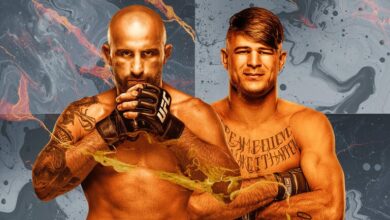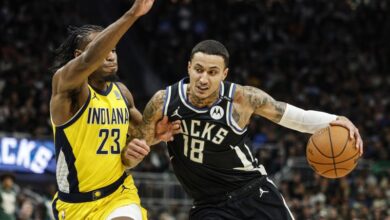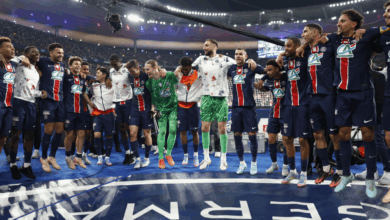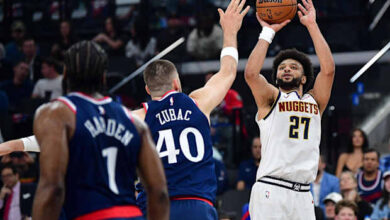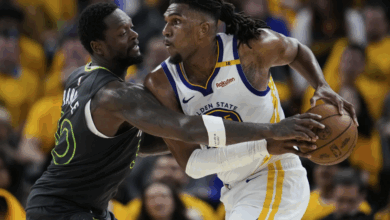Alex Palou Makes History as 1st Spanish Driver to Win Indy 500
Alex Palou made history Sunday by becoming the first Spanish driver to win the Indianapolis 500, outdueling Marcus Ericsson in a thrilling finish at Indianapolis Motor Speedway.

INDIANAPOLIS, (WE) — Alex Palou made history on Sunday by becoming the first Spanish driver to win the Indianapolis 500. He held off former Chip Ganassi Racing teammate Marcus Ericsson during a dramatic final stretch at Indianapolis Motor Speedway. The win adds another prestigious title to Palou’s already stacked career, which includes three IndyCar championships in just four years. This was the one race that had eluded him. Palou had said his resume wouldn’t feel complete without it.
The 2025 season has already been spectacular for the 27-year-old. Coming into the Indy 500, Palou had won four of the first five races. His victory on Sunday marked his fifth win in six starts this season and finally added “The Greatest Spectacle in Racing” to his growing legacy.
Ericsson, the 2022 Indy 500 champion, finished second while driving for Andretti Global. It marked his third top-two finish in the last four Indy 500s and easily his best performance since switching from Ganassi to Andretti for the 2024 season. David Malukas finished third for A.J. Foyt Racing, giving Chevrolet its highest-finishing car. Josef Newgarden, the defending Indy 500 champion, retired from the race after a fuel pump issue ended his run.
Late in the race, most of the frontrunners, including Palou, were on the conventional fuel strategy. While widely used, it ultimately proved slightly less efficient compared to alternative plans. Palou cycled to the front of this group during the last two stints, when drivers needed to conserve fuel. Despite the challenge, he found a way to stay fast while still saving enough to finish.
Ericsson had emerged as the lead car on the optimal alternate strategy after Ryan Hunter-Reay fell out of contention. The 2014 Indy 500 winner suffered a bizarre setback when his car failed to restart after his final pit stop. That incident opened the door for Ericsson, who had been on a different sequence of pit stops after falling out of sync early in the race.
But Ericsson’s advantage hit a wall when he struggled to pass Devlin DeFrancesco and Louis Foster, who were running a similar fuel strategy. Both drivers remained on the lead lap and made it tough for Ericsson to build a gap. That allowed Palou and Malukas to stay within striking distance.
With just 14 laps remaining, Palou made his move. At Turn 1, he dove inside and grabbed the lead from Marcus Ericsson. Ericsson had to back off to avoid contact. That overtake would prove decisive. Although Palou couldn’t lap DeFrancesco or Foster either, he held off Ericsson over the final laps.
The race came to a tense close when Nolan Siegel, driving for Arrow McLaren, crashed exiting the last corner. His accident brought out the caution flag, which froze the field and secured Palou’s position at the front. The win was official as Palou crossed the yard of bricks with the yellow flag flying.
It was a historic moment not just for Palou, but for Spanish motorsport. No Spanish driver had ever won the Indy 500 before. Palou had long made clear his desire to win this race, and the emotion was clear in his post-race celebrations.
Ericsson could only reflect on what might have been. He admitted he left the door open during the decisive pass, but the result still marked a strong showing in his new ride with Andretti. It also proved he remains a force at Indy, where he consistently delivers under pressure.
Malukas, meanwhile, matched the third-place result his A.J. Foyt Racing teammate Santino Ferrucci had secured in 2023. Malukas had been ahead of Palou at the start of the final stint but couldn’t hold the lead after pit stops. Still, it was a much-needed podium for both him and the team.
McLaren’s Pato O’Ward ran near the front for much of the day but faded late and finished fourth. Felix Rosenqvist, now driving for Meyer Shank Racing, placed fifth ahead of Kyle Kirkwood of Andretti and Ferrucci in seventh.
Newgarden’s day started full of hope. Despite being sent to the back of the grid due to a qualifying infraction involving his team, Team Penske driver Newgarden charged through the field. He moved into the top 10 well before halfway. His effort came during a caution period after Kyle Larson, making his second Indy 500 start with McLaren, triggered an accident that changed the race’s rhythm.
By lap 133, Newgarden was running sixth and looked poised to make another serious run at a win. But his race unraveled quickly. After pitting for fuel, he fell a lap down and never fully recovered. Multiple pit stops followed before Penske made the call to retire the car with 60 laps remaining. The decision ended Newgarden’s bid to become the first back-to-back-to-back winner since the early days of the race.
Will Power was the only Penske driver to reach the finish, but he placed just 19th after starting from the back. Scott McLaughlin, the third Penske car, never made it to green flag racing. On what was meant to be the final warm-up lap before the start, McLaughlin crashed into the pit wall. His car spun while trying to warm the tires, ending his day before the action even began.
Read More:
- PSG treble hopes alive after French Cup final rout of Reims
- Arsenal Ends Barcelona’s Reign with Stunning Champions League Win
- Knicks vs. Pacers Game 1: A Classic Clash of Styles Kicks Off the Eastern Conference Finals
The start of the race had already been delayed 36 minutes due to rain. Race officials began the event under caution conditions to let the track dry and allow drivers time to adapt. But the early drama continued once the race got underway, with multiple incidents shaking up the field.
Robert Shwartzman had been the story of qualifying. The Prema Racing driver claimed a surprise pole position in just his second IndyCar start. Expectations for a victory were modest, but there was hope that Shwartzman could at least contend.
Unfortunately, the dream didn’t last long. Shwartzman slipped to fourth early and then dropped back further during pit cycles. His race ended in chaos just before the halfway mark. While pulling into the pits, Shwartzman misjudged his entry, hit the wall, and clipped several crew members. Though the mechanics escaped serious injury, Prema chose to retire the car after lap 89. The crew had attempted to fit a new front wing, but the damage proved too extensive.
Prema’s other car, driven by Callum Ilott, ran cleanly and consistently. Ilott stayed in the top 10 for much of the race and brought the car home in 12th. For a new team, it was a solid result and showed promise for the future.
While the Indy 500 had its share of mechanical issues, pit stop drama, and caution flags, Palou’s drive stood out for its precision and patience. He made just one major move all day — the pass on Ericsson — but it was all he needed.
Palou now has five wins in six races and looks unstoppable in the 2025 season. His win at Indy cements his legacy not only as one of the best in modern IndyCar but also as the greatest Spanish driver the sport has seen. He has achieved what no other Spaniard had before — conquering the Brickyard.
For Honda, the 1-2 finish was a huge statement after recent Chevrolet dominance. Malukas’s third-place result gave Chevrolet something to celebrate, but the top honors clearly belonged to Honda-powered teams.
The broader implications of Palou’s win could reach beyond IndyCar. Formula One teams have shown increasing interest in Palou, especially after his dominance in recent seasons. If he continues this form, don’t be surprised to see his name linked to an F1 seat again — a possibility that had surfaced after his McLaren testing sessions in 2022 and 2023.
But for now, Palou is the king of Indy. With his face soon to be added to the Borg-Warner Trophy, he’s joined a club of racing legends that includes A.J. Foyt, Rick Mears, Al Unser, and Helio Castroneves.
Alex Palou’s path to glory was far from easy, but the result was undeniable. He took advantage when it mattered most and made a bold move that will be remembered for years to come. Now, with the monkey off his back, he can chase more championships — and maybe even a second Indy 500.
The eyes of the racing world were fixed on Indianapolis this weekend, and Alex Palou delivered a performance worthy of the spotlight. His name is now etched into history, not just as a champion, but as a pioneer. For Spain, it’s a proud day. For IndyCar, it’s another thrilling chapter in a race that continues to produce legends.
